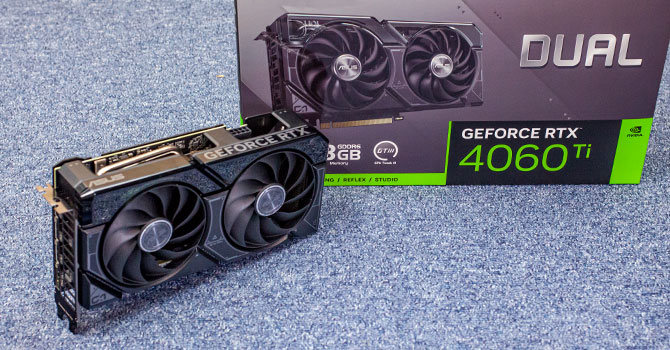CONS
- Sub-20% delta over RTX 3060 Ti at 1080p
- Low-end GPU at mid-range price
- Generally slower than an RTX 3070
The moment has arrived. We have encountered an Ada Lovelace GPU that is priced comparably to its last generation counterpart. Indeed, the Nvidia RTX 4060 Ti is set to be released with a manufacturer’s suggested retail price, aligning with the RTX 3060 Ti from the Ampere generation. This particular model was regarded as one of the finest GPUs within the Ampere lineup and is considered one of the most exceptional mid-range graphics cards ever produced.
The Ada variant of the RTX 3060 Ti presents us with yet another impressive, relatively affordable graphics card from the green team. The RTX 4060 Ti provides enhanced performance and features compared to its predecessor. Nevertheless, my concern lies in the definition of GPU equivalence in our increasingly intricate technological landscape.
When evaluating a GPU, should one assess its gaming performance based on a modest percentage improvement compared to a previous generation card, or should the classification be based on the quality of the graphics silicon utilized in that particular card? I find myself potentially at odds with Nvidia’s own criteria for measuring equivalence.
In my view, the RTX 4060 Ti may share a name similarity with the RTX 3060 Ti, yet the actual hardware specifications differ significantly.
Evaluation of the Nvidia RTX 4060 Ti.
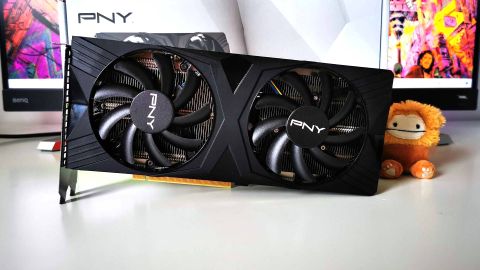
I understand your situation. It has indeed been challenging. You have been anticipating the upgrade of your outdated graphics card for two years. You have endured the GPU supply chain crisis, the mining downturn, and the subsequent significant price increases. Furthermore, you have resisted the urge to invest in a previous-generation GPU, despite the recent price reductions in light of the upcoming release of new Nvidia and AMD graphics cards.
Undoubtedly, the Ada architecture successor to the RTX 3060 Ti is poised to become the premier graphics card of this generation for those with a high demand for GPU performance. It is indeed the right moment to invest in a new RTX 40-series card.
I sincerely wish I could express an unequivocal ‘yes!’ However, although this is undoubtedly the card you should purchase if you were contemplating an RTX 3060 Ti or RX 6700 XT, primarily due to its superior gaming performance, I hesitate to fully endorse this recommendation.
The RTX 4060 Ti is a meticulously designed graphics card, engineered to achieve a specific performance benchmark at the lowest possible cost, while also offering Nvidia a solution for any AD106 GPUs that do not meet the requirements for the more advanced mobile RTX 4070 models.
The design aims to surpass the performance of an RTX 3060 Ti by a narrow margin, and while the business rationale for this approach is undeniable, the absence of DLSS 3 and Frame Generation diminishes the sense of a significant generational advancement compared to the previous Ampere model.
In my opinion, the value of this silicon component does not justify the price tag, despite the performance it provides being arguably commendable.
Specifications of the Nvidia RTX 4060 Ti.
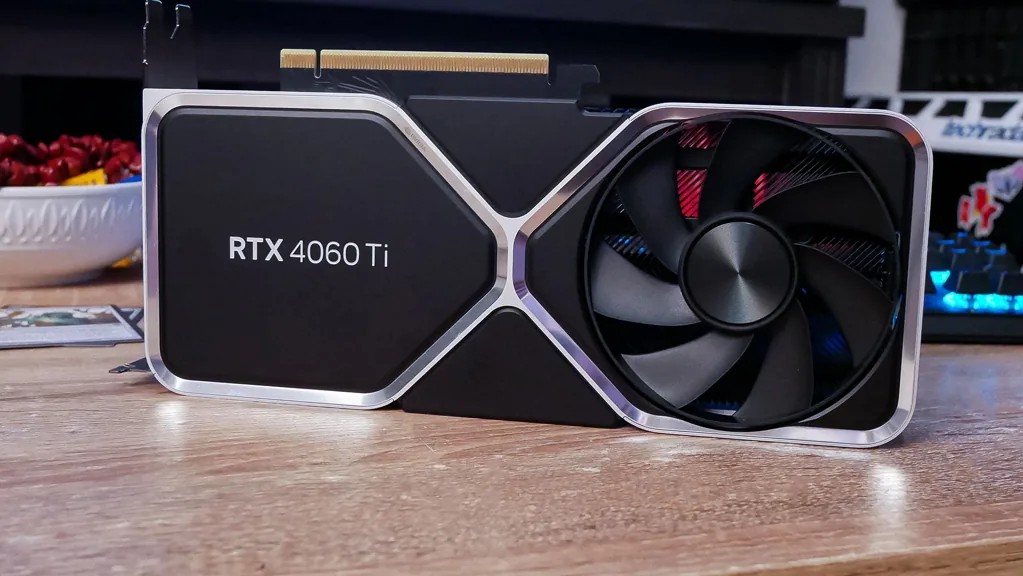
The RTX 4060 Ti is equipped with the same AD106 GPU that Nvidia has launched with the RTX 4070 mobile GPU. However, for the desktop variant, Nvidia has opted to reduce the specifications from 4608 CUDA cores and 36 streaming multiprocessors (SMs) to 4352 CUDA cores and 34 SMs. This is disappointing, as other desktop Ada cards that utilize the same GPU as their mobile counterparts have maintained an equal or greater core count. The RTX 4060 Ti stands out as the sole model to feature a reduced number of cores.
However, even if it were to debut with the complete AD106 core count, it would still lag behind the RTX 3060 Ti’s GA104 GPU, which features 4864 CUDA cores.
| Header Cell – Column 0 |
RTX 4060 Ti |
RTX 3060 Ti |
| GPU |
AD106 |
GA104 |
| Architecture |
Ada Lovelace |
Ampere |
| Lithography |
TSMC 4N |
Samung 8N |
| CUDA cores |
4352 |
4864 |
| SMs |
34 |
38 |
| RT Cores |
34 |
38 |
| Tensor Cores |
136 |
152 |
| ROPs |
48 |
80 |
| L2 cache |
32 MB |
4 MB |
| Boost clock |
2,540 MHz |
1,665 MHz |
| Memory |
8GB GDDR6 |
8GB GDDR6 |
| Memory interface |
128-bit |
256-bit |
| Memory bandwidth |
288 GB/s |
448 GB/s |
| Die size |
187.8mm² |
392.5mm² |
| Transistors |
22.9B |
17.4B |
| TGP |
160W |
200W |
The discussion pertains to a distinct GPU architecture; however, the fundamental structure of the cores and Streaming Multiprocessors (SMs) in Ada compared to Ampere has seen minimal alterations. The changes that do exist do not significantly impact the inherent performance of the cores. As previously mentioned in my comprehensive analysis of the Ada architecture around the launch of the RTX 4090, the primary factors that have propelled this generation of GPUs beyond their predecessors are the enhanced efficiency and substantial increase in clock speeds enabled by the TSMC 4N manufacturing process, along with the significant improvements in L2 cache.
This represents a significant improvement as well. The RTX 3060 Ti featured only 4MB of L2 cache, whereas the RTX 4060 Ti is equipped with an impressive 32MB. As evidenced by the recent advancements in GPUs and CPUs over the past year, the inclusion of a substantial amount of additional cache markedly enhances the gaming performance of a system.
Nvidia has provided further clarification regarding this release, primarily in response to criticism concerning the limited VRAM of an 8GB card. The explanation centers on the concept of game data being situated nearer to the GPU, which allows the system to minimize the time spent on data retrieval and transfer. According to Nvidia, there has been a 50% reduction in the data traffic between the GPU and VRAM across the 128-bit memory bus.
The presence of additional L2 cache integrated on the chip reduces the frequency with which the GPU must access the VRAM for pertinent game data, resulting in enhanced efficiency and improved performance.
While it does not address the potential issues related to VRAM capacity, which is primarily influenced by the type of game data that can exceed the limits of a 32GB cache, such as texture data, it does emphasize the significance of a more proximate data storage medium on gaming performance. Additionally, it illustrates the continued effectiveness of the 128-bit memory bus, even though the memory bandwidth is 160GB/s less than that of the RTX 3060 Ti.
A 192-bit bus would prove to be even more efficient, enabling Nvidia to incorporate 12GB of GDDR6 onto the board without resorting to Micron’s specialized VRAM clamshell mode, which is necessary to fit 16GB into a card that is priced higher and set to launch in July. Additionally, this would enhance the perception of the RTX 4060 Ti’s GPU specifications, making them appear less inferior in comparison to the GA104 chip found in the RTX 3060 Ti.
In addition to having a reduced number of CUDA cores and a narrower memory bus, this GPU features nearly half the render output units (ROPs) and a diminished count of texture and ray tracing units. Furthermore, due to the TSMC 4N manufacturing process, the GPU is significantly smaller, measuring almost half the size of its predecessors.
Indeed, the AD106 chip shares a greater resemblance with the GA106 GPU found in the RTX 3060 than one might expect. This is noteworthy.
Performance and Benchmark Analysis of the Nvidia RTX 4060 Ti
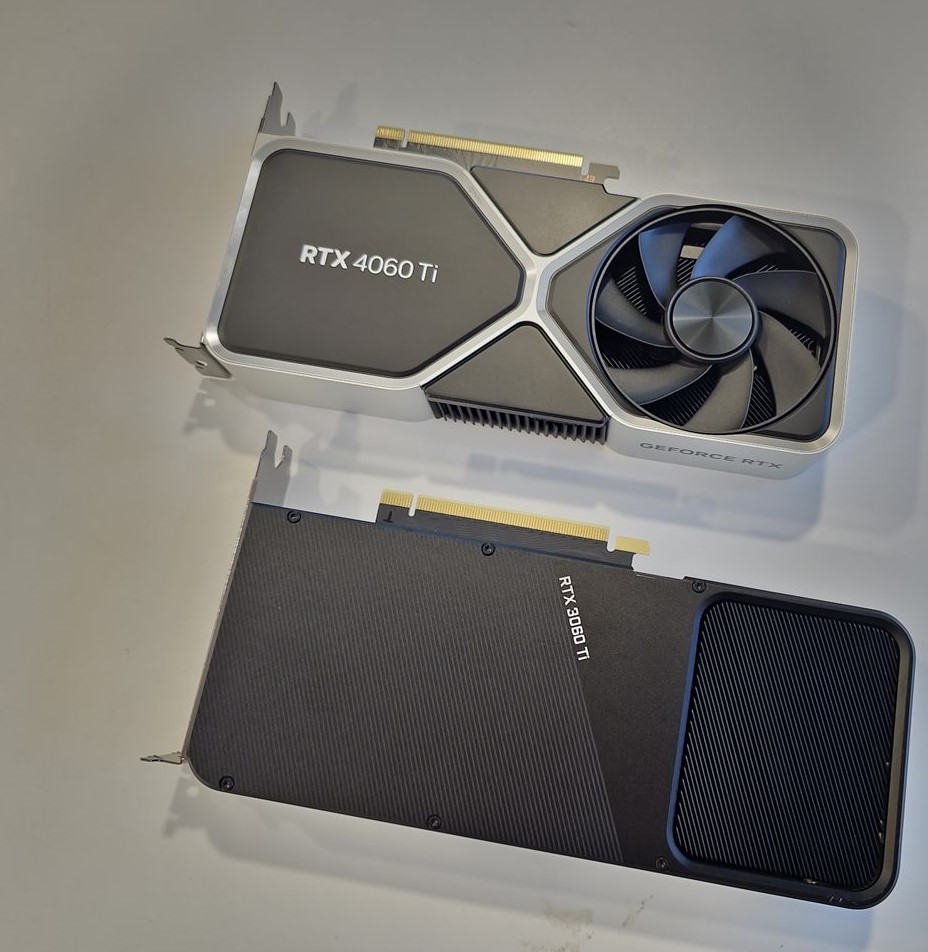
Regarding its gaming capabilities, the RTX 4060 Ti meets the necessary requirements, though it may not exceed expectations significantly. For those purchasing this graphics card for 1080p gaming, it is reassuring to note that it surpasses the performance of the previous generation’s RTX 3060 Ti by a considerable margin.
The margin observed is relatively comfortable, albeit not substantial. In Cyberpunk 2077 and F1 22, we noted a maximum delta of 19% compared to the previous generation Ampere card; however, the overall performance enhancement was considerably less significant.
While the RTX 4070 demonstrated performance levels significantly exceeding those of the RTX 3070, effectively matching the RTX 3080, the RTX 4060 Ti struggles to surpass the capabilities of the RTX 3060 Ti. Its performance at 1080p is either on par with or slightly inferior to that of the RTX 3070.
The implementation of DLSS 3 and Frame Generation on the RTX 4060 Ti allows for the possibility of engaging in 4K gaming. Although this graphics card is not specifically engineered for such high-resolution gaming, and we would not advise pairing it with a 4K monitor, it underscores the significant performance enhancement that Nvidia’s technology provides when utilized.
Cyberpunk 2077, F1 22, and Microsoft Flight Simulator can all be played in 4K resolution when the dual upscaling features are activated, and this is achieved while utilizing the highest graphics settings available. Additionally, it is possible to achieve playable performance in the highly demanding RT Ultra mode of The Witcher 3 at 1440p by employing DLSS 3 and Frame Generation technology.
The observed enhancement in performance ranges from 83% to 246% across the four games evaluated. This demonstrates the capability of the Ada GPU architecture to significantly boost gaming performance while maintaining nearly unchanged image quality, even with a GPU as compact as the AD106.
The capabilities of DLSS 3 and Frame Generation are undeniably remarkable, as is typically the case; however, their application is confined to games that explicitly support these features. While the roster of compatible titles is expanding and there is significant enthusiasm surrounding this technology, there will inevitably be instances when a newly launched game either lacks a DLSS 3 day-one patch or will not receive support in the future. In such cases, one must depend on traditional rasterization, which does not provide the next-generation experience that Nvidia’s advanced AI software suite offers.
It is evident that this GPU represents a next-generation advancement, particularly in terms of efficiency. As previously mentioned, it is nearly half the size of the GA104 GPU found in the RTX 3060 Ti, yet the RTX 4060 Ti operates with a significantly reduced power consumption. On average, we observed a power draw of 157W compared to 200W for the RTX 3060 Ti, all while the Ada GPU functions at almost 1GHz higher than the older Ampere chip.
The performance per watt of the RTX 4060 Ti is exceptional, further emphasizing the efficiency of the Ada GPU architecture. It is worth recalling the initial concerns regarding its power consumption and the necessity for substantial power supply units. However, the reality has proven to be quite different.
An examination of the Nvidia RTX 4060 Ti.
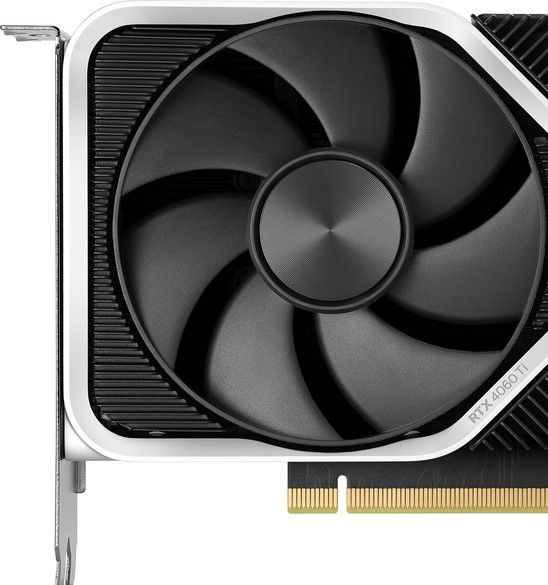
The Nvidia RTX 4060 Ti clearly outperforms the impressive RTX 3060 Ti. In terms of pure gaming performance, one can expect an enhancement of up to 19% at 1080p, although this may vary in certain instances. However, due to the remarkable capabilities of DLSS 3 and its Frame Generation feature, there are occasions where performance gains can reach as high as 200% when utilized in suitable games and optimal settings.
It is advertised as a 1080p graphics card, priced, yet it is, in practice, a highly competent 1440p GPU, thanks to its 8GB frame buffer. Moreover, when engaging in games that utilize Frame Generation, there are instances where satisfactory 4K performance can be achieved; however, it is noteworthy that it does not universally resolve frame rate issues at that resolution as one might have anticipated.
This remains an impressive comparative outcome when measured against the RTX 3060 Ti, particularly for a graphics card priced. Given that the previous Ampere GPU has only recently begun to see its price fall below the manufacturer’s suggested retail price (MSRP), the RTX 4060 Ti offers a significantly enhanced performance for the same cost that one would have incurred for the last-generation card just a few weeks ago.
This observation likely reflects the condition of the present graphics card market as much as it pertains to the new mid-range Ada card. In terms of raster performance, it does not significantly surpass the RTX 3060 Ti and is frequently outperformed by the RTX 3070. Nvidia is fortunate that prices have not decreased to a level where the RTX 3070 approaches the; otherwise, it would have been compelled to invest more resources into the AD106 GPU or potentially alter the GPU tier altogether.
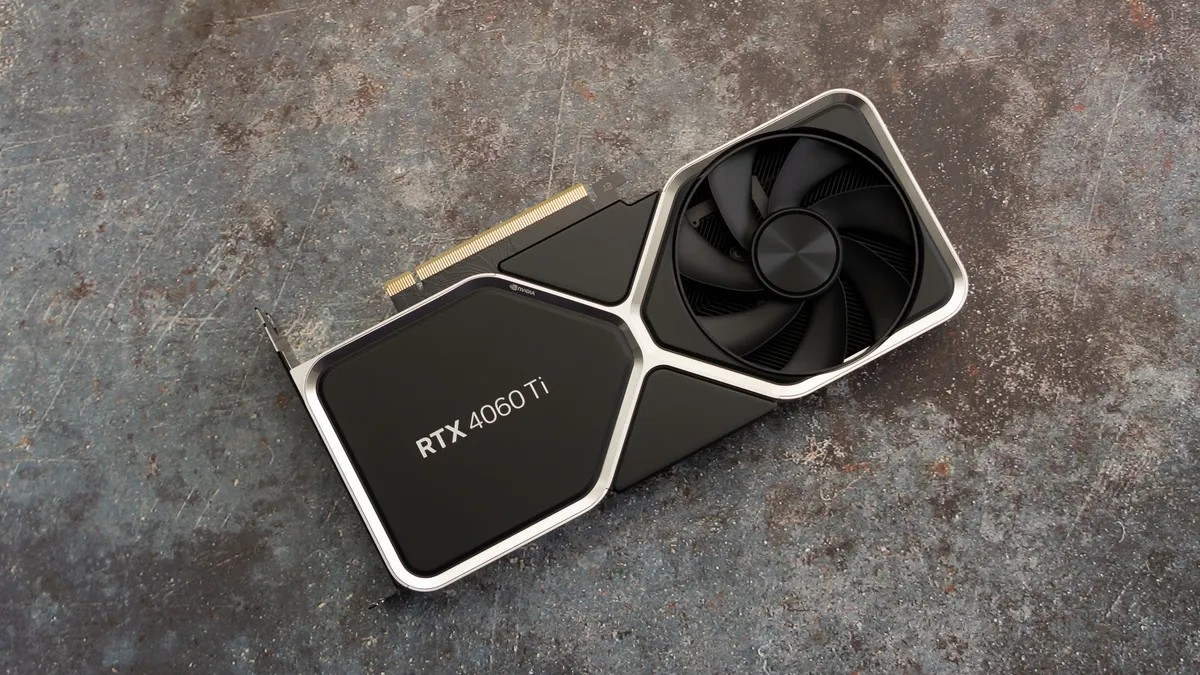
Upon evaluating the RTX 4060 Ti as a comprehensive performance offering, it undeniably possesses several attributes that validate its price point. However, I find myself grappling with the observation that the GPU architecture bears a closer resemblance to the RTX 3060 from the Ampere series rather than its Ti counterpart. This leads me to the impression that we are consistently one tier away from Ada achieving the remarkable potential that its hardware seems capable of delivering.
The RTX 4060 Ti features a half-size 128-bit memory bus, which is a significant aspect of its design. Additionally, it utilizes the AD106 GPU, which possesses a lower number of CUDA cores and render output units (ROPs) compared to the GA104 variant found in the RTX 3060 Ti. This GPU is relatively compact, equipped with a narrow memory bus, and is likely to be less expensive to produce than the previous Ampere chips, either currently or in the foreseeable future.
This situation provides Nvidia with dual advantages for investors, allowing the company to showcase elevated profit margins on its graphics cards alongside increased average selling prices. This represents a mutually beneficial scenario from a commercial perspective, though it is less favorable for consumers.
The fact that the RTX 4060 Ti outperforms the RTX 3060 Ti can be attributed to the additional 28MB of L2 cache and significantly higher clock speeds, which are made possible by the highly efficient TSMC 4N manufacturing process. These enhancements play a crucial role in boosting gaming frame rates. Furthermore, the inclusion of DLSS 3 and Frame Generation provides an additional layer of performance enhancement.
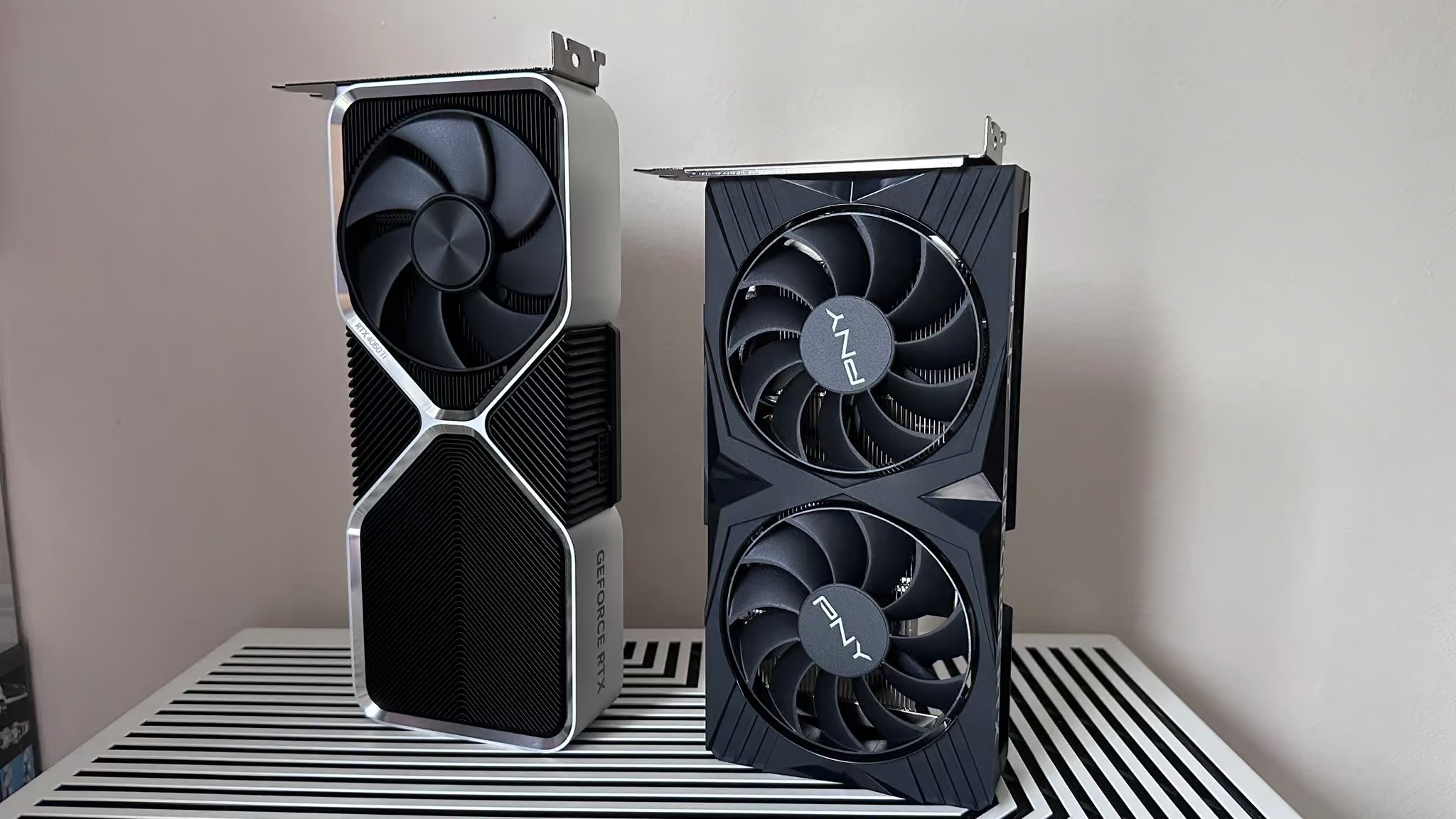
It may be somewhat disappointing that Nvidia has not provided the complete specifications for the AD106 GPU intended for desktop use; instead, this information is exclusively available for the mobile variant of the RTX 4070, which features all 4608 shaders, in contrast to the 4352 shaders found in the RTX 4060 Ti.
It is possible that with the complete set of CUDA cores, we might observe a performance increase exceeding 20% compared to the RTX 3060 Ti, particularly in scenarios without upscaling. This could potentially enhance my overall perception of the card. However, Nvidia has had no incentive to provide additional resources. The prices of previous generation cards have not significantly decreased, particularly for those in the higher tier, and AMD appears to be withdrawing from the desktop market this generation, effectively conceding dominance to Nvidia.
For those who have not yet explored the RTX 30 or RX 6000 series, the RTX 4060 Ti offers an excellent mid-range upgrade. With the incorporation of DLSS 3 and Frame Generation, it promises to provide a gaming experience that is genuinely next-generation.
However, there will inevitably be certain game releases that do not offer support for DLSS 3, as well as those that have not been sufficiently optimized to effectively utilize an 8GB frame buffer. In such instances, when your gaming PC experiences stuttering and you find yourself expressing frustration towards developers on Twitter, you may begin to reconsider the worth of investing over in an RTX 4060 Ti.

